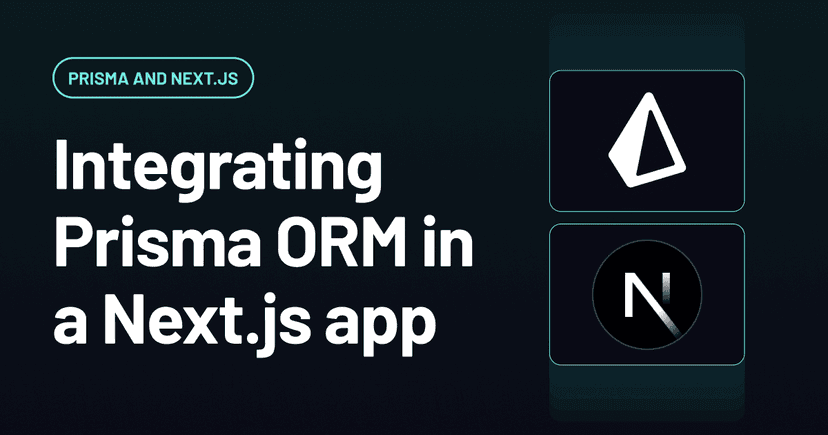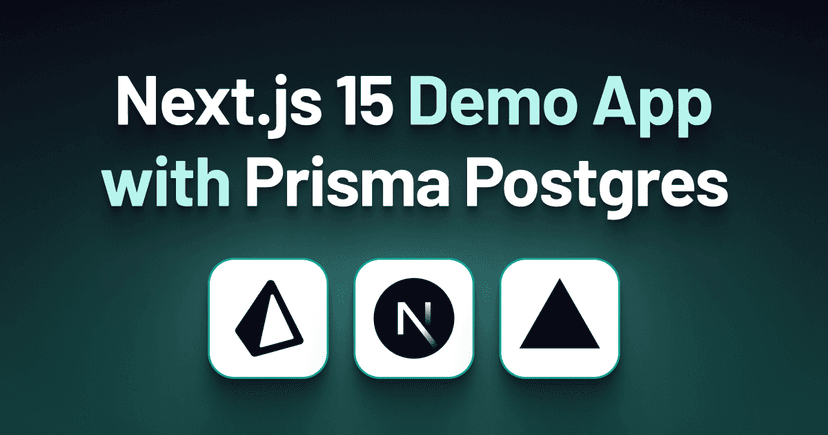The easiest way to work with a database in Next.js
Build high-performance and type-safe Next.js apps with Prisma’s developer-friendly database tools: The world’s most popular TypeScript ORM and the first serverless database without cold starts.
Try Next.js with Prisma

Why Next.js and Prisma
Built for high-performance web apps
Built on unikernels, Prisma Postgres runs on bare metal servers for peak performance and infinite scalability.
Serverless, without cold starts
The first serverless database with pay-as-you-go pricing, no infrastructure management, and zero cold starts.
Flexible data fetching & rendering
Display your data using client-side rendering, server-side rendering and static site generation.
Built-in global caching
Add a cache strategy to any database query and its results will be cached close to your users for peak performance and UX.
End-to-end type safety
Pairing Prisma with Next.js ensures your app is coherently typed, from the database to your React components.
Helpful communities
Both Next.js and Prisma have vibrant communities where you find support, fun events and amazing developers.
How Prisma and Next.js fit together
Prisma’s database tools are the perfect fit for building Next.js applications. They serve as the data access layer for Server Components (both static and dynamic), Server Actions, Route Handlers, and standalone services.
Static Site Generation with Prisma
Next.js 13+ introduced a fundamental shift in how we handle data fetching. Server Components, which are the default in the App Router, allow you to fetch data directly in your components without extra wrappers or special functions. This means you can use Prisma directly in your components and automatically get static generation when possible.
Here's how to implement a blog page that's statically generated at build time. The data fetching happens server-side, and the HTML is generated once during build.
Static Site Generation with Prisma
Next.js 13+ introduced a fundamental shift in how we handle data fetching. Server Components, which are the default in the App Router, allow you to fetch data directly in your components without extra wrappers or special functions. This means you can use Prisma directly in your components and automatically get static generation when possible.
Here's how to implement a blog page that's statically generated at build time. The data fetching happens server-side, and the HTML is generated once during build.
Resources

How to use Prisma ORM with Next.js
Learn how to build a fullstack Next.js 15 app with Prisma Postgres from scratch! This tutorial starts with bootstrapping an app using create-next-app and provides step-by-step instructions for gradually adding adds more functionality using Prisma Postgres as a database.

Next.js 15 + Prisma Postgres Auth Example
This demo for a blogging application demonstrates how to build login and functionality using Prisma Postgres and Next.js 15. It uses “Login with GitHub” by default and can easily be expanded to other authentication providers.
Next.js and Prisma is the ultimate combo if you need a database in React apps! 🚀
Featured Prisma & Next.js community examples
A starter template for modern SaaS apps! next-forge comes with Next.js 15, auth, DB & ORM, payments, docs, blog, o11y, analytics, emails, and a lot more, to save you the initial boilerplate for your next Next.js SaaS app.
Learn best practices for using Prisma with Next.js App Router! Explore server components, server actions, and edge middleware, plus efficient querying, handling migrations, and deploying to Vercel. Perfect your database workflow and scale seamlessly!
t3 is a web development stack focused on simplicity, modularity, and full-stack type safety. It includes Next.js, tRPC, Tailwind, TypeScript, Prisma and NextAuth.
Blitz.js is an application framework that is built on top of Next.js and Prisma. It brings back the simplicity and conventions of server-rendered frameworks like Ruby on Rails while preserving everything developers love about React and client-side rendering.
This comprehensive 4-hour tutorial teaches you how to build a fullstack form application. The form will be responsive, allow for drag & drop functionality, features different kinds of layout fields like titles, subtitles and paragraphs as well various kinds of field types like text, number, dropdowns, dates, checkbox and text areas.
Join the Prisma Community
We have multiple channels where you can engage with members of our community as well as the Prisma team.
GitHub
Browse the Prisma source code, send feedback, and get answers to your technical questions.
Find more→X
Stay updated, engage with our team, and become an integral part of our vibrant online community.
Find more→Youtube
Stay updated, engage with our team, and become an integral part of our vibrant online community.
Find more→
